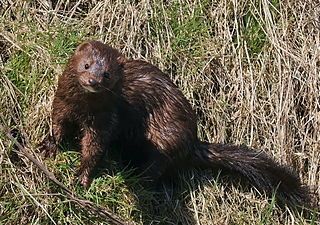Animal Waste-to-Energy Projects

One contemplates fish-waste in British Columbia that comes from the significant percentage of the fish that is unusable: the head, tail, guts, and spine. Currently, these parts are shredded and reintroduced to the rivers from which they came, eventually, I suppose, winding up in the ocean.
In addition to recapturing the energy, one would think that there would be a significant ecologic benefit to making this cease. Processing fish waste, however, is not without its challenges. Most of the fish in this part of the world are caught and processed within a fairly short period of the year; the waste, therefore needs to be dried (most of it is water) and frozen until needed.
The other project is based on the carcasses of the 1.5 million minks that are slaughtered each year in Eastern Canada for their pelts. The entire remainder of the mink can be converted back to some form of useful energy. When I physically recoiled when the idea was presented, the speaker assured me that this is an extremely high-energy feedstock.
Of course, the energy content of the carcass was not my main concern. I was quite disappointed to learn that our “civilization” still grows and slaughters millions of minks annually; I thought naively that this form of brutality had gone out of fashion in the 1960s, when we began to take stock of the most basic and obvious principles of animal rights. Yes, I’m aware that the project wouldn’t directly cause the death of incremental minks. It does, on the other hand, make the fur industry supply chain more viable, so it’s something I’d rather not see happen.
If you want to convert animal waste to energy in a fashion that’s strictly win-win, I point out that such concepts are not hard to find. One of my favorites contemplates the 8000 tons of dung per day coming from 400,000 tightly constrained buffalo in Southern Pakistan that is currently forming a river and making its way into the Arabian Sea. Here, we’re turning an ecological disaster into biogas and biofertilzer. It may be a project that you’ll still want to withhold from the dinner table, but it’s one of many in which everyone involved leads healthier, more harmonious, and more productive lives.

I’m unfamiliar with the process here, Craig. Can you point me to a summary resource?
Again I neglected to enter my name for the aboce comment and question.
You mean the actual technology? It’s some form of gasification/pyrolysis; I’m not sure.